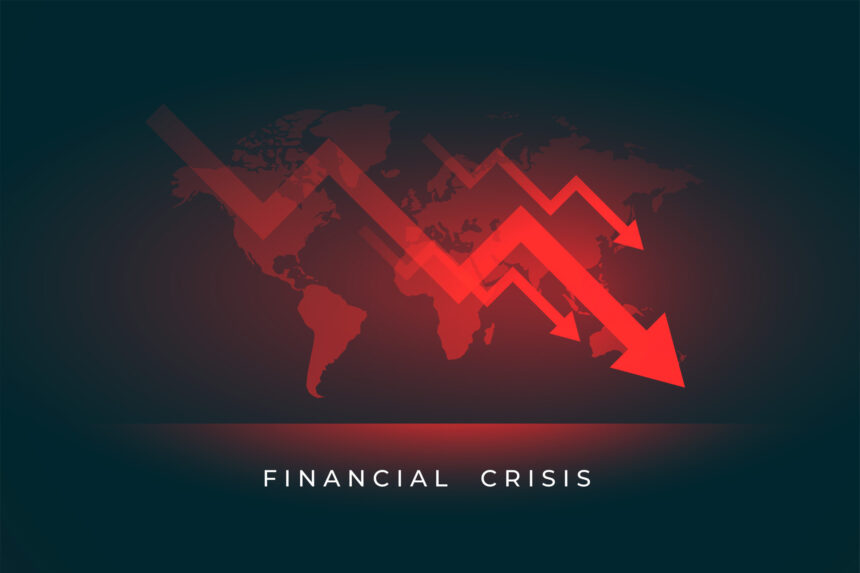Introduction
When most people hear the term “deflation,” they immediately associate it with economic downturns, collapsing businesses, wage cuts, and reduced consumer demand. For decades, traditional economic theory has warned against deflation, viewing it as a force that stifles economic growth and leads to recessions. However, this perspective largely stems from historical instances where deflation was the result of financial crises rather than economic progress.
Today, we are witnessing a new kind of deflation—one driven not by economic distress but by technological advancements and increased productivity. As industries become more efficient, production costs decrease, and goods and services become more affordable. In this sense, deflation can act as a catalyst for prosperity, unlocking a future of abundance where people enjoy a higher standard of living with lower costs.
This article explores how deflation, when powered by innovation and efficiency, is reshaping the global economy. We’ll examine its impact on wages, employment, business models, decentralization, and long-term economic trends, shedding light on the opportunities and challenges that lie ahead.
Understanding Deflation: More Than Just Falling Prices
Deflation occurs when the general price level of goods and services declines over time, increasing the purchasing power of money. This phenomenon can be triggered by several factors, including:
- Increased productivity: As industries automate processes and improve efficiency, production costs decline, leading to lower consumer prices.
- Technological advancements: Innovations such as artificial intelligence (AI), robotics, and renewable energy reduce the cost of manufacturing, transportation, and services.
- Lower production costs: Supply chain optimizations, energy efficiency improvements, and global competition drive prices down.
- Reduced demand (in economic downturns): Traditional deflationary periods occur when consumer spending drops, leading to lower prices due to excess supply.
While historical deflationary periods—such as those during the Great Depression—were devastating due to economic stagnation and widespread debt burdens, today’s deflation, driven by technological progress, represents a different narrative. Instead of scarcity, this form of deflation leads to abundance by making essential goods and services more affordable and accessible to a larger population.
Technology-Driven Deflation: A Game-Changer
Unlike past deflationary cycles caused by financial crises, technology-driven deflation is a byproduct of human ingenuity. Many industries have experienced rapid cost reductions due to technological advancements. Some prominent examples include:
- Computers and Electronics: Moore’s Law, which states that computing power doubles approximately every two years while costs decline, has made personal computers, smartphones, and other electronic devices increasingly affordable. The same trend applies to storage, with solid-state drives (SSDs) and cloud computing costs plummeting over the years.
- Renewable Energy: The price of solar panels, wind turbines, and battery storage has declined dramatically in the past decade. This trend is making sustainable energy sources more accessible, reducing electricity costs for consumers and businesses.
- Artificial Intelligence and Automation: AI-powered software and robotics are streamlining business operations, reducing labor costs, and increasing production efficiency, leading to cheaper products and services.
These examples illustrate how technological deflation is benefiting consumers by increasing their purchasing power. When essential goods become more affordable, people can allocate their income to other areas, improving their overall quality of life.
How Deflation Increases Purchasing Power
A common misconception about deflation is that it always leads to reduced economic activity. In reality, when deflation is driven by increased efficiency rather than economic collapse, it empowers consumers by making their money go further. Some key ways in which purchasing power increases include:
- Cheaper Consumer Goods: Electronics, appliances, and everyday necessities become more affordable, allowing more people to access modern conveniences.
- Lower Education Costs: Online learning platforms and digital education tools are reducing the cost of acquiring new skills, making education more accessible and affordable.
- Declining Transportation Costs: The widespread adoption of electric vehicles (EVs) and ride-sharing platforms is decreasing transportation expenses. Autonomous vehicles and efficient logistics systems are expected to drive costs down even further in the future.
- More Affordable Healthcare: AI-driven diagnostics, telemedicine, and biotechnology advancements are reducing healthcare costs, making high-quality medical services more accessible to a larger population.
This trend contrasts with inflationary economies, where rising prices erode consumer purchasing power, forcing people to spend more for the same products and services. In a deflationary, technology-driven world, people benefit from lower costs without sacrificing quality or access.
Deflation and Employment: The Shift Towards New Industries
One of the biggest concerns about deflation is its potential impact on employment. Critics argue that automation, AI, and robotics will replace human jobs, leading to widespread unemployment. While it’s true that technological advancements eliminate certain types of jobs, history shows that they also create new opportunities in emerging industries.
- The Industrial Revolution: The shift from agricultural labor to mechanized manufacturing initially displaced many workers but ultimately led to the creation of millions of jobs in factories, engineering, and logistics.
- The Rise of the Internet: The decline of print media and traditional retail was offset by the explosion of digital marketing, e-commerce, software development, and online content creation.
- The AI & Automation Era: As machines take over repetitive tasks, new jobs will emerge in AI development, robotics maintenance, data science, cybersecurity, and creative industries.
Instead of fearing job losses, societies must focus on workforce retraining and education programs to help workers transition into new roles. Governments and businesses must invest in skill development to ensure that workers remain competitive in the evolving job market.
The Role of Decentralization and Deflation in the Future Economy
Another key driver of economic deflation is decentralization, which is transforming industries by eliminating middlemen and increasing efficiency. This shift is evident in several areas:
- Cryptocurrencies & Blockchain: Decentralized finance (DeFi) and blockchain-based financial systems are reducing transaction costs by eliminating intermediaries such as banks and credit card companies. Peer-to-peer transactions are becoming faster, cheaper, and more transparent.
- Remote Work & Digital Nomadism: The ability to work from anywhere allows professionals to relocate to lower-cost areas while still earning competitive salaries, reducing living expenses.
- Peer-to-Peer Marketplaces: Platforms like Airbnb, Uber, and Fiverr enable individuals to provide services directly to consumers, cutting out traditional corporations and reducing costs for both providers and customers.
These decentralization trends contribute to economic deflation by increasing efficiency and lowering costs, ultimately benefiting consumers and businesses alike.
Challenges and Risks of Deflation
While technological deflation has many advantages, it also presents some challenges:
- Debt Burdens: Deflation increases the real value of debt, making it more difficult for individuals and businesses to repay loans. This can lead to financial instability if debt levels are too high.
- Short-Term Economic Disruptions: Certain industries may struggle to adjust to declining prices, leading to temporary job losses and economic shifts.
- Income Inequality: If wealth generated by technological advancements is concentrated in the hands of a few, economic disparity could increase, limiting the widespread benefits of deflation.
To mitigate these risks, policymakers must ensure economic transitions are managed carefully through education programs, social safety nets, and equitable wealth distribution strategies.
A Future of Abundance: What Comes Next?
As deflationary forces reshape the economy, we may see several major trends emerge:
- Basic Goods and Services Becoming Nearly Free: Advances in automation, AI, and renewable energy could make essentials like food, electricity, and internet access nearly costless.
- Shorter Workweeks: Increased efficiency may reduce the need for long work hours while maintaining high productivity.
- Universal Basic Income (UBI): With AI and automation increasing productivity, UBI could help distribute economic benefits more evenly.
Final thoughts
Deflation, often feared as an economic threat, is evolving into a powerful driver of abundance and prosperity. As technology lowers costs and improves efficiency, people can enjoy higher purchasing power, new job opportunities, and greater financial freedom. While challenges exist, the potential benefits of a deflationary, innovation-driven economy are immense. The future may not be defined by scarcity, but by abundance—where technology empowers individuals to thrive like never before.






